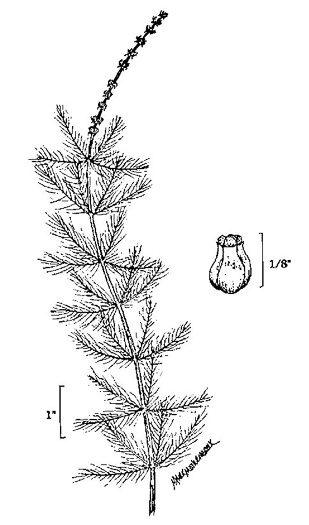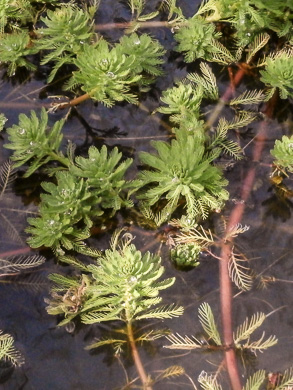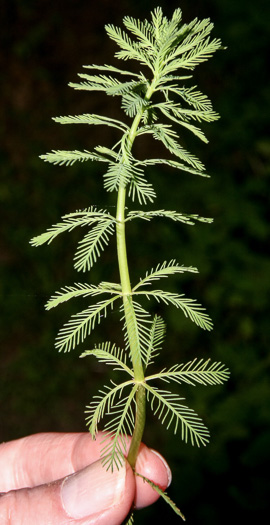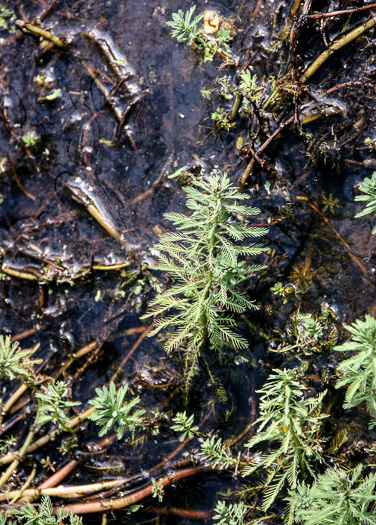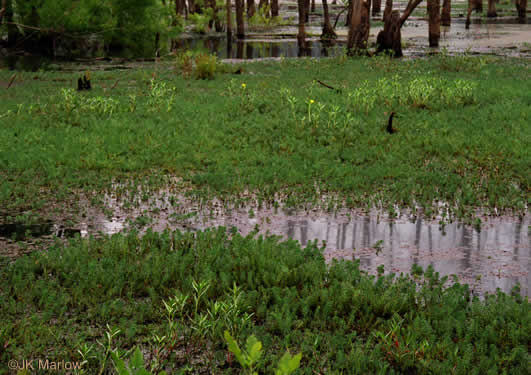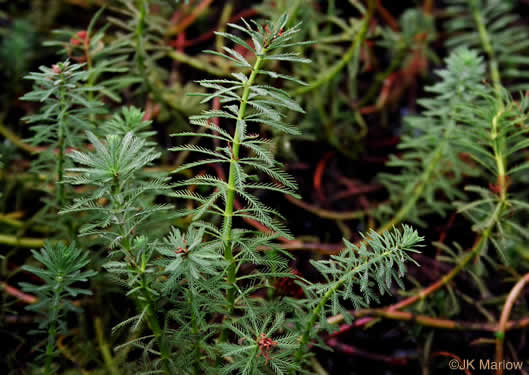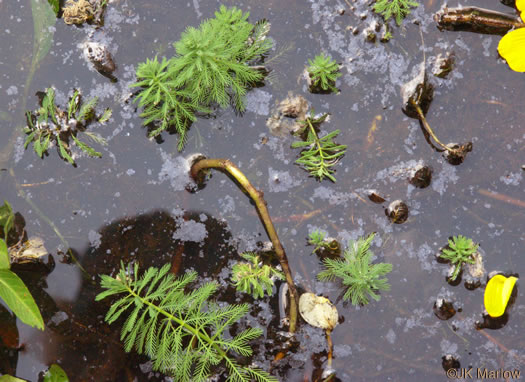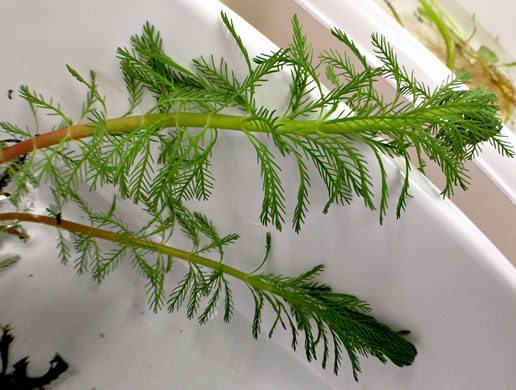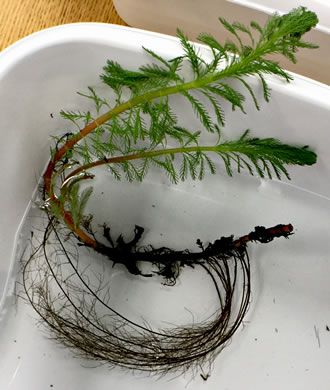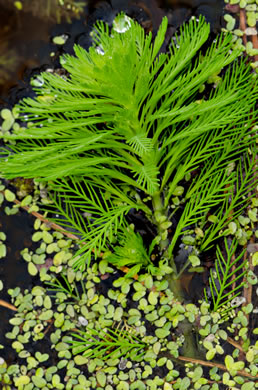Spermatophytes (seed plants): Angiosperms (flowering plants): Eudicots: Core Eudicots: Saxifragales
WEAKLEY'S FLORA OF THE SOUTHEASTERN US (4/24/22):
Myriophyllum aquaticum
FAMILY
Haloragaceae
Go to FSUS key
Dig deeper at SERNEC, a consortium of southeastern herbaria.
Check out EDDMapS.org to see where this has been reported.
Learn more about Parrot-feather from the Vascular Plants of North Carolina.
SYNONYMOUS WITH
PLANTS NATIONAL DATABASE:
Myriophyllum aquaticum
FAMILY
Haloragaceae
SYNONYMOUS WITH Flora of North America
Myriophyllum aquaticum
SYNONYMOUS WITH VASCULAR FLORA OF THE CAROLINAS (Radford, Ahles, & Bell, 1968) 138-02-001:
Myriophyllum brasiliense FAMILY Haloragaceae
SYNONYMOUS WITH Manual of the Southeastern Flora (Small, 1933, 1938)
Myriophyllum proserpinacoides
COMMON NAME:
Parrot-feather
To see larger pictures, click or hover over the thumbnails.
Joe Standaert jst_d13025_greenville0052
May Greenville County SC
Lake Conestee Nature Park
All leaves pectinate, feather-like; most leaves emersed, per Vascular Flora of the Carolinas (Radford, Ahles, & Bell, 1968).
![]() COMPARE
aquatic plants
COMPARE
aquatic plants
JK Marlow jkm160914_095
September
SE-EPPC Aquatic Plant ID Workshop
Whorled featherlike leaves (vs. Cabomba's opposite and dichotomously divided), per Weakley's Flora.
JK Marlow jkm160914_097
September
SE-EPPC Aquatic Plant ID Workshop
A rooted aquatic plant, per Weakley's Flora (2015).
WEAKLEY'S FLORA OF THE SOUTHEASTERN US (4/24/22):
Myriophyllum aquaticum
FAMILY
Haloragaceae
SYNONYMOUS WITH
PLANTS NATIONAL DATABASE:
Myriophyllum aquaticum
FAMILY
Haloragaceae
SYNONYMOUS WITH
Flora of North America
Myriophyllum aquaticum
SYNONYMOUS WITH
VASCULAR FLORA OF THE CAROLINAS (Radford, Ahles, & Bell, 1968) 138-02-001:
Myriophyllum brasiliense
FAMILY
Haloragaceae
SYNONYMOUS WITH
Manual of the Southeastern Flora (Small, 1933, 1938)
Myriophyllum proserpinacoides
If a search such as "Carex leptalea var. leptalea" doesn't deliver the results you want, try "Carex leptalea".
Or, to minimize chances of a misspelling, try just "Carex le".
Less is more: If "pencil flower" doesn't deliver the results you want, try "pencil".

